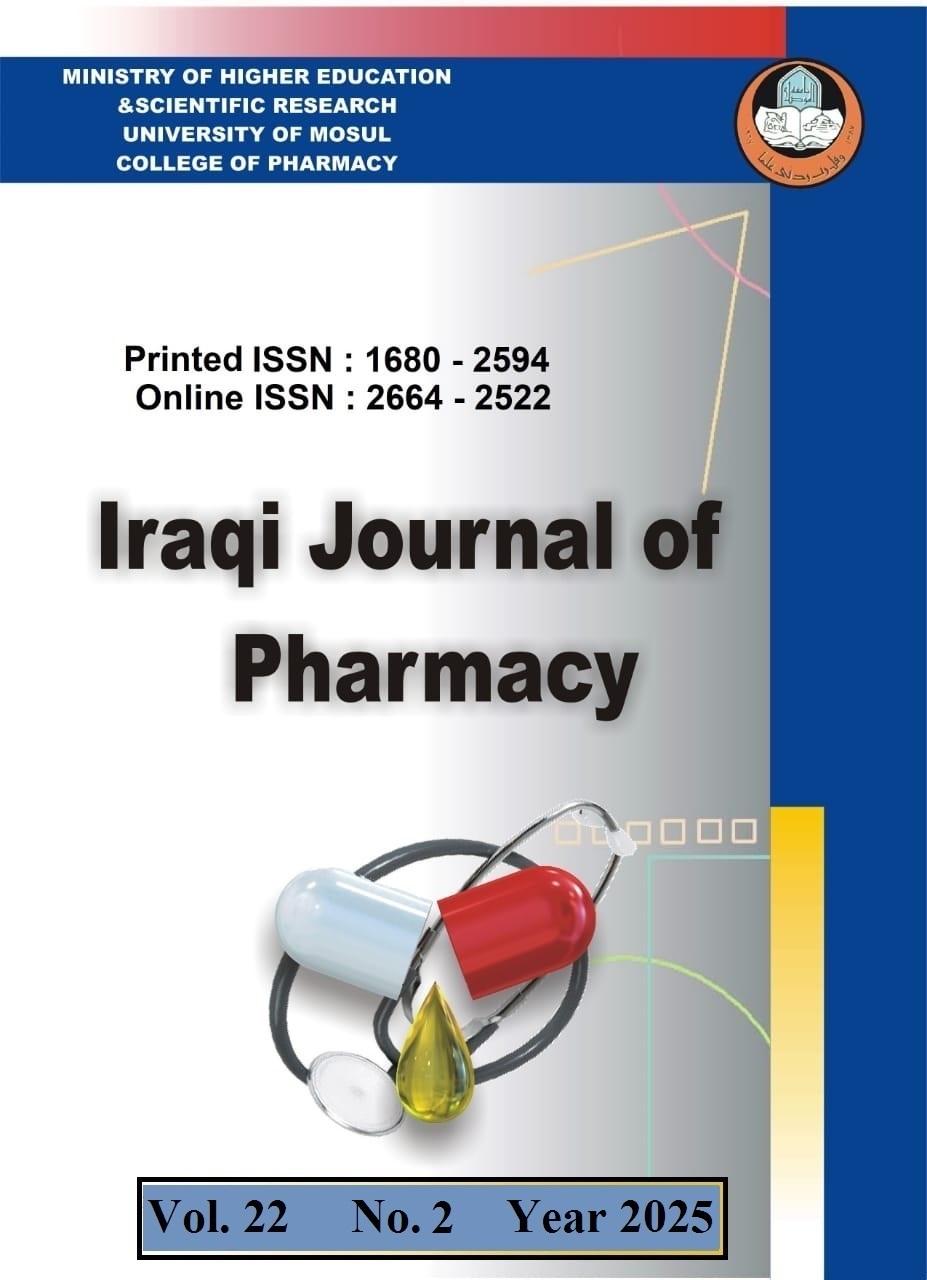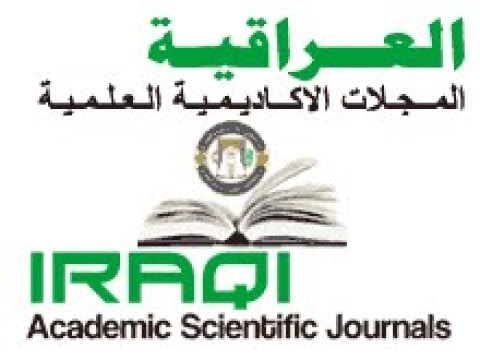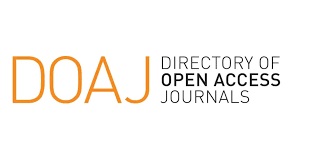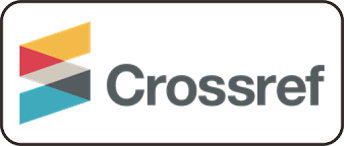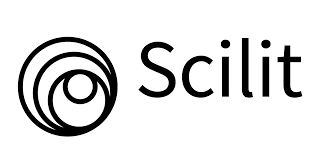Exploring the Antimicrobial Activity of Quince Seeds Extracted by Two Different Methods
Abstract
Background: The rise of resistance to numerous effective antimicrobic drugs and the necessity to investigate alternative agents to address this emerge are conspicuously underscored. Aim: The aim is to evaluate the TPC (total phenolic contents), TFC (total flavonoidal contents), and the antimicrobial activity of two quince seeds extracts and their combination with commercial antimicrobial drugs. Methods: In this work two ethanolic extracts (Qu-1 and Qu-2) were prepared from quince seeds using two methods, microwave (M.wv) and sequential microwave-sonication assisted extraction (MSAE). The quantification of total phenolic content TFC and total flavonoid content TFC in these extracts were conducted using Folin-Ciocalteu and AlCl3 method respectively. The extracts, along with its combination with conventional antibiotics were tested for antimicrobial activity against a variety of aerobic and anaerobic bacteria using ciprofloxacin and metronidazole as references, respectively. The extracts were also tested against fungi (C. albicans and A. niger) using the standard, nystatin. Results: TPC and TFC for Qu-1 were 2.25781.82 g GAE/g crude solid, 1.49011.76 g RU/g crude solid respectively, while these values for Qu-2 were 1.03412.05 g GAE/g and 0.73421.53 g RU/g. Both extracts showed antimicrobial effectiveness against all examined pathogens with Qu-1 showing superior effectiveness. So, there is a positive association between TPC, TFC and antimicrobial activity. The combination of Qu-1 can enhances both the antifungal and anti-aerobic effects of NYS and CIP by reducing MFC and MBC and their corresponding potency factor. On the contrary, the Qu-2-antibiotic combination does not show any modification. Both extracts have microbicidal activity based on MBC/MIC ratio which is lower than 4. Conclusion: Quince seed extracts, especially Qu-1, show promise in fighting microbial infections. They could be used alone or in combination with antibiotics. Further research and development may lead to the development of new antimicrobials to address the growing issue of resistance.
References
- Abdelbaky AS, Diab YM. Effect of Various Extraction Methods and Solvent Types on Yield, Phenolic and Flavonoid Content and Antioxidant Activity of Spathodea nilotica Leaves. Egyptian Journal of Chemistry. 2021;64(12): 7583 -7589.
- Abu Bakar FI, Abu Bakar MF, Abdullah N, Endrini S, Fatmawati S. Optimization of Extraction Conditions of Phytochemical Compounds and Anti-Gout Activity of Euphorbia hirta L. (Ara Tanah) Using Response Surface Methodology and Liquid Chromatography-Mass Spectrometry (LC-MS) Analysis. Evidence-based Complementary and Alternative Medicine. 2020;2020(1):113.
- Ahmed M, Marrez DA, Abdelmoeen NM, Mahmoud EA, Abdel-Shakur Ali M, Decsi K. Proximate Analysis of Moringa oleifera Leaves and the Antimicrobial Activities of Successive Leaf Ethanolic and Aqueous Extracts Compared with Green Chemically Synthesized Ag-NPs and Crude Aqueous Extract against Some Pathogens. International Journal of Molecular Sciences. 2023;24(4):1-20.
- Alibi S, Crespo D, Navas J. Plant-derivatives small molecules with antibacterial activity. Antibiotics. 2021;10(3):119.
- Ashraf MV, Pant S, Khan MAH, Shah AA, Siddiqui S, Jeridi M, et al. Phytochemicals as Antimicrobials: Prospecting Himalayan Medicinal Plants as Source of Alternate Medicine to Combat Antimicrobial Resistance. Pharmaceuticals. 2023;16(6):156.
- Atanasov AG, Zotchev SB, Dirsch VM, Orhan IE, Banach M, Rollinger JM, et al. Natural products in drug discovery: advances and opportunities. Nature Reviews Drug Discovery. 2021;20(3):20016.
- Baquero F. Threats of antibiotic resistance: an obliged reappraisal. International Microbiology. 2021;24(4):499506.
- Bloukh SH, Edis Z, Sara HA, Alhamaidah MA. Antimicrobial properties of lepidium sativum l. Facilitated silver nanoparticles. Pharmaceutics. 2021;13(9):511.
- Chaves JO, de Souza MC, da Silva LC, Lachos-Perez D, Torres-Mayanga PC, Machado AP da F. Extraction of Flavonoids From Natural Sources Using Modern Techniques. Frontiers in Chemistry. 2020;8(9): 1-25.
- Cheng M, He J, Wang H, Li C, Wu G, Zhu K, Cen X, Zhang Y, Tan L. Comparison of microwave, ultrasound and ultrasound-microwave assisted solvent extraction methods on phenolic profile and antioxidant activity of extracts from jackfruit (Artocarpus heterophyllus Lam.) pulp. Lwt-food science and technology. 2023;173(9):110.
- Chinemerem Nwobodo D, Ugwu MC, Oliseloke Anie C, Al-Ouqaili MTS, Chinedu Ikem J, Victor Chigozie U, et al. Antibiotic resistance: The challenges and some emerging strategies for tackling a global menace. Journal of Clinical Laboratory Analysis. 2022;36(9):110.
- Coque TM, Cantn R, Prez-Cobas AE, Fernndez-de-Bobadilla MD, Baquero F. Antimicrobial Resistance in the Global Health Network: Known Unknowns and Challenges for Efficient Responses in the 21st Century. Microorganisms. 2023;11(4):132.
- Dubale S, Kebebe D, Zeynudin A, Abdissa N, Suleman S. Phytochemical Screening and Antimicrobial Activity Evaluation of Selected Medicinal Plants in Ethiopia. Journal of Experimental Pharmacology. 2023;15(2):5162.
- El Kahlout KEM, El Borsh W, Aksoy A, El Kichaoi AY, El Hindi MW, El Ashgar NM. Evaluation of Antibacterial and Synergistic/Antagonistic Effect of Some Medicinal Plants Extracted by Microwave and Conventional Methods. Journal of Biosciences and Medicines. 2020;08(09):6979.
- Gebreyohannes G, Nyerere A, Bii C, Berhe Sbhatu D. Determination of Antimicrobial Activity of Extracts of Indigenous Wild Mushrooms against Pathogenic Organisms. Evidence-based Complementary and Alternative Medicine. 2019;2019(2): 1-7.
- Ghafoor K, Sarker MZI, Al-Juhaimi FY, Babiker EE, Alkaltham MS, Almubarak AK. Extraction and Evaluation of Bioactive Compounds from Date (Phoenix dactylifera) Seed Using Supercritical and Subcritical CO2 Techniques. Foods. 2022;11(12):1-15.
- Gharekhani M, Ghorbani M, Rasoulnejad N. Microwave-assisted extraction of phenolic and flavonoid compounds from Eucalyptus camaldulensis Dehn leaves as compared with ultrasound-assisted extraction. Latin American Applied Research. 2012;42(7):305310.
- Gorgani L, Mohammadi M, Najafpour GD, Nikzad M. Sequential Microwave-Ultrasound-Assisted Extraction for Isolation of Piperine from Black Pepper (Piper nigrum L.). Food and Bioprocess Technology. 2017;10(12):21992207.
- Haq A, Siddiqi M, Batool SZ, Islam A, Khan A, Khan D, Khan H, Khan H, Shah AA, Hasan F, Ahmed S, Badshah M. Comprehensive investigation on the synergistic antibacterial activities of Jatropha curcas pressed cake and seed oil in combination with antibiotics. AMB Express. 2019;9(67):121.
- Hassan H, Attia E, Desoukey S, Mohamed K, Kamel M. Quantitative Analysis of Total Phenolic and Total Flavonoid Constituents of some Ficus species. Journal of advanced Biomedical and Pharmaceutical Sciences. 2019;2(1):3840.
- Hirschfeld K. Microbial insurgency: Theorizing global health in the Anthropocene. Anthropocene Review. 2020;7(1):318.
- Hmamou A, Eloutassi N, Alshawwa SZ, Al Kamaly O, Kara M, Bendaoud A, El-Assari E, Tlemcani S, El khomsi M, Lahkimi A. Total Phenolic Content and Antioxidant and Antimicrobial Activities of Papaver rhoeas L. Organ Extracts Growing in Taounate Region, Morocco. Molecules. 2022;27(3):112.
- Huang L, Zhu X, Zhou S, Cheng Z, Shi K, Zhang C, Shao H. Phthalic acid esters: Natural sources and biological activities. Toxins. 2021;13(7): 1-17.
- Jebir RM, Mustafa YF. Novel coumarins isolated from the seeds of Citrullus lanatus as potential antimicrobial agents. Eurasian Chemical Communications. 2022;4(8):692708.
- Khalil RR, Mohammed ET, Mustafa YF. Evaluation of In vitro Antioxidant and Antidiabetic Properties of Cydonia Oblonga Seeds Extracts. Journal of Medicinal and Chemical Sciences. 2022;5(6):10481058.
- Khalil RR, Mohammed ET, Mustafa YF. Various promising biological effects of Cranberry extract: A review. Clinical Schizophrenia and Related Psychoses. 2021;15(S6):19.
- Krzepiko A, Praak R. Quince Seeds As a Potential Source of Mineral and Biological Active Compounds. Journal of Elementology. 2023;28(1):10722.
- Lataran MJ, Najafpour GD, Poureini F, Hamedi S, Mohammadi M. Extraction of Mucilage from Quince ( Cydonia Oblonga M .) Seed and Investigation of its Biological Activities. Bioiterface research in applied chemistry. 2023;13(6):118.
- Lin D, Xiao M, Zhao J, Li Z, Xing B, Li X, Kong M, Li L, Zhang Q, Liu Y, Chen H, Qin W, Wu H, Chen S. An overview of plant phenolic compounds and their importance in human nutrition and management of type 2 diabetes. Molecules. 2016;21(10): 1-19.
- Mahboubi A, Asgarpanah J, Sadaghiyani PN, Faizi M. Total phenolic and flavonoid content and antibacterial activity of Punica granatum L. var. pleniflora flowers (Golnar) against bacterial strains causing foodborne diseases. BMC Complementary and Alternative Medicine. 2015;15(1):17.
- Mati P, Sablji M, Jakobek L. Validation of Spectrophotometric Methods for the Determination of Total Polyphenol and Total Flavonoid Content. Journal of AOAC International. 2017;100(6):17951803.
- Mohammed ET, Khalil RR, Mustafa YF. Phytochemical Analysis and Antimicrobial Evaluation of Quince Seeds Extracts. Journal of Medicinal and Chemical Sciences. 2022;5(6):968979.
- Mohammed ET, Mustafa YF. Coumarins from red delicious apple seeds: Extraction, phytochemical analysis, and evaluation as antimicrobial agents. Systematic Reviews in Pharmacy. 2020;11(2):6470.
- Mojzer EB, Hrni MK, kerget M, Knez , Bren U. Polyphenols: Extraction Methods, Antioxidative Action, Bioavailability and Anticarcinogenic Effects. Molecules. 2016;21(7):1-38.
- Nwobodo DC, Eze PM, Okezie UM, Okafoanyali JO, Okoye FBC, Esimone CO. Bioactive Compounds Characterization and Antimicrobial Potentials of Crude Extract of Curvularia lunata, a Fungal Endophyte from Elaeis guineensis. Tropical Journal of Natural Product Research. 2022;6(3):395402.
- Rapper S De, Viljoen A, Vuuren S Van. The In Vitro Antimicrobial Effects of Lavandula angustifolia Essential Oil in Combination with Conventional Antimicrobial Agents. Evidence-Based Complementary and Alternative Medicine. 2016;2016(10):19.
- Rather JA, Yousuf S, Ashraf QS, Mir SA, Makroo HA, Majid D, Francisco JB. Nutritional and bioactive composition, nutraceutical potential, food and packaging applications of Cydonia oblonga and its byproducts: A review. Journal of Food Composition and Analysis. 2023;115(11).
- Senica M, Stampar F, Veberic R, Mikulic-petkovsek M. Fruit seeds of the Rosaceae family: A waste , new life or a danger to human health? agricultural and food chemistry. 2017;65(48):1-25.
- Serwecinska L. Antimicrobials and Antibiotic-Resistant Bacteria: A Risk to the Environment and to Public Health. Water. 2020;12(12):3313-3330.
- Shaida B, Singh NB, Singh K. In-vitro evaluation of anti-inflammatory and anti-microbial properties of ethanolic extract of cydonia oblonga seeds. Journal of Scientific and Industrial Research. 2020;79(1):4952.
- Silva DM, DA COSTA PA, Ribon AOB, Purgato GA, Diaz-Muoz G, Diaz MAN. Plant extracts display synergism with different classes of antibiotics. Annals of the Brazilian Academy of Sciences. 2019;91(2):18.
- Solaberrieta I, Mellinas C, Jimnez A, Garrigs MC. Recovery of Antioxidants from Tomato Seed Industrial Wastes by Microwave-Assisted and Ultrasound-Assisted Extraction. Foods. 2022;11(19): 1-20.
- Suganya T, Packiavathy I, Aseervatham G, Carmona A, Rashmi V, Mariappan S, Devi NR, Anath DA. Tackling Multiple-Drug-Resistant Bacteria With Conventional and Complex Phytochemicals. Frontiers in Cellular and Infection Microbiology. 2022;12(6):121.
- Vaou N, Stavropoulou E, Voidarou C, Tsigalou C, Bezirtzoglou E. Towards advances in medicinal plant antimicrobial activity: A review study on challenges and future perspectives. Microorganisms. 2021;9(10):128.
